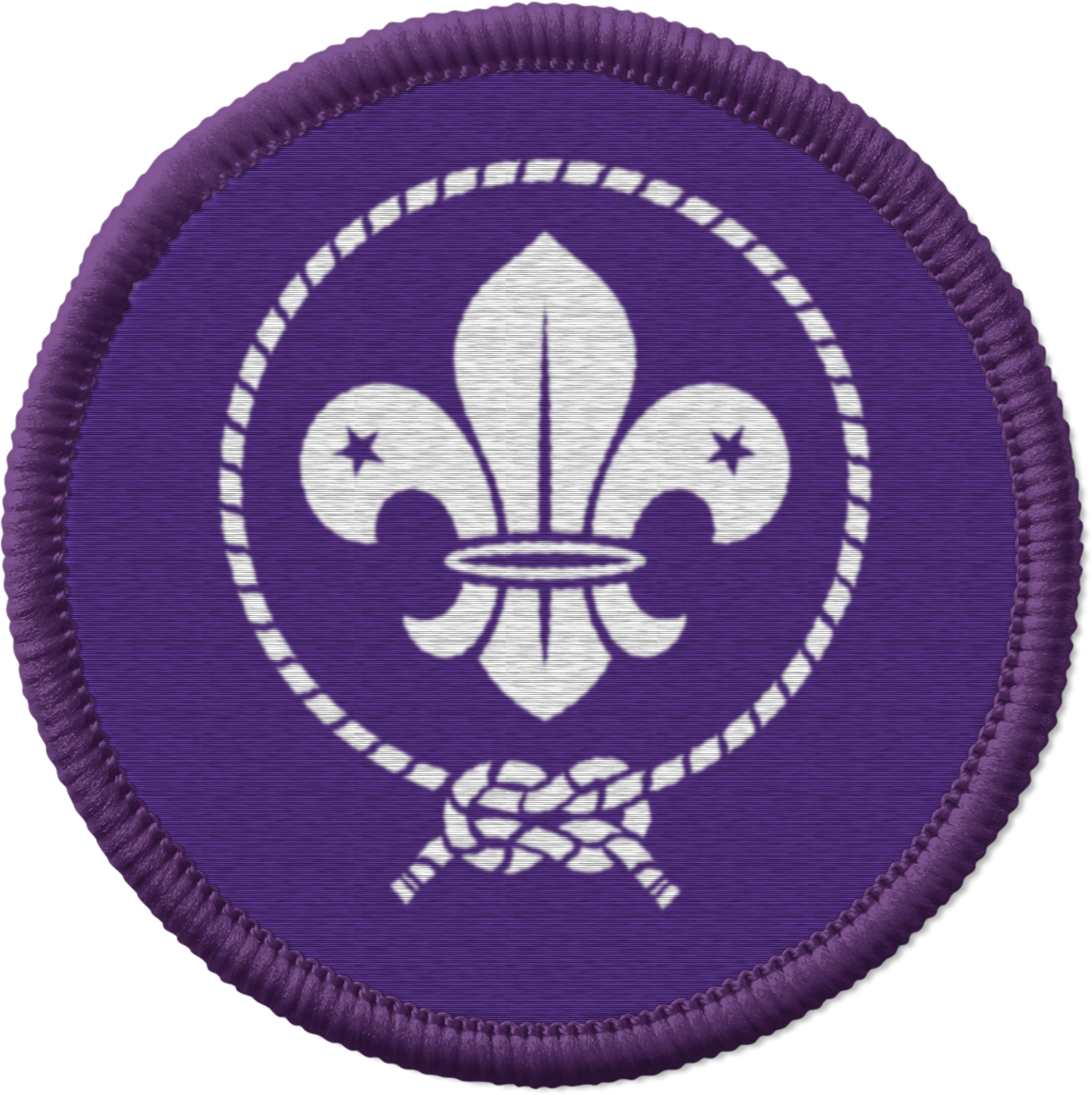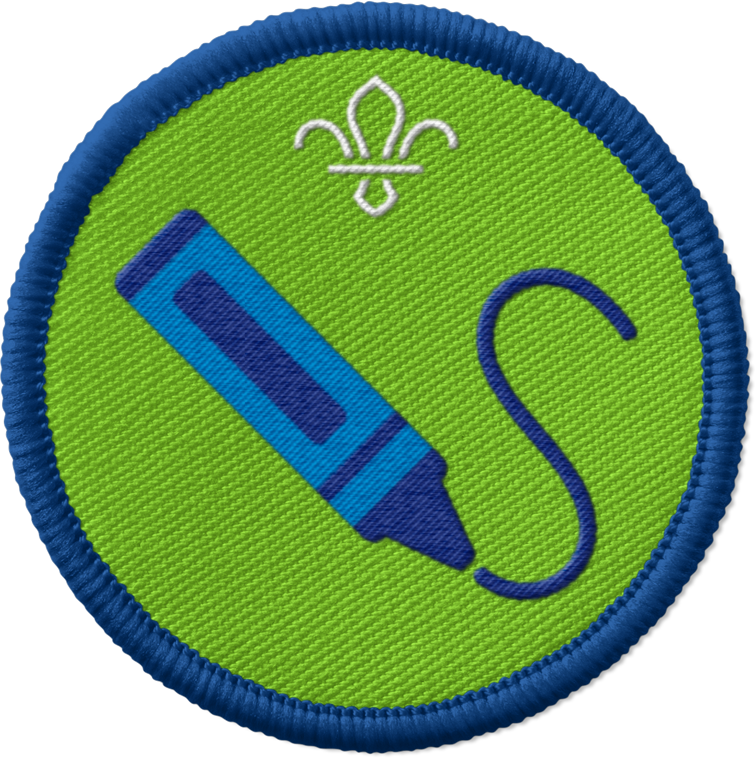
Welcome to Squirrel Scouts
You’ll need
- Scrap card
- Tissue paper
- Glue sticks
- Wooden skewers
- Lolly sticks
- Electric tea lights
- Marshmallows
Welcome to Squirrels!
- Everyone should sit in a circle.
- All the volunteers should introduce themselves. What's their name and what are they looking forward to doing at Squirrels?
- One of the volunteers should read a register with everyone’s names on. When each person hears their name, they should wave and say hello.
- Everyone should chat about what they think makes someone a Scout. How do they feel? You could help people think about things, such as making a Promise, learning skills, values like caring for others or being honest, or taking care of and appreciating the outdoors.
Who do you think Scouts are?
- Everyone should find a space.
- An adult volunteer or young leader should ask a question about Scouts. They should give everyone four possible answers – each time they say a possible answer, they should point to a different corner of the room.
- Everyone should run to the corner that they think has the right answer. You might need to remind people which answer each corner represents. You could also mark areas on the floor, for example with hoops.
Explore nature with The Hike
- Everyone should sit in a circle.
- Someone should read The Hike by Alison Farrell. This adventurous story will help everyone understand that they can explore nature at their own pace.
- Once everyone’s heard the story, they should take some time to reflect on it as a group.
- As a group, talk about how Scouts helps people to explore and embrace everything nature has to offer.
- We’ve included some questions to help you reflect in the pink box below.
Make a model campfire
- Everyone should split into small groups. One adult should join each group.
- Everyone should collect a piece of card, three or four lolly sticks, an electric tea light, and a cup. One person from each group should collect some glue sticks and tissue paper for their group to share.
- Everyone should glue lolly sticks to their card to make the base of a campfire.
- Everyone should tear the tissue paper into strips. They should glue the strips to the outside of the cup to represent the fire. People should feel free to get creative by scrunching, ripping, and layering the tissue paper. You might want to let people know that they’ll be putting their cups face down on top of the tea light, so people can choose to make their flames go up into the air.
- Everyone should turn their tea light on and place in the middle of their lolly stick campfire.
- Finally, everyone should to place their cup on top of their tea light.
- Everyone should work together to tidy away all of the equipment, then they should sit in a circle with their campfires in front of them.
Campfire songs
- Now, lead some campfire songs and encourage everyone to join in. Check out The perfect campfire for some song ideas and videos you could sing along to.
When did Scouts start?
- 1907
- 1927
- 1967
- 1987
How many Scouts are there in the world?
- 1 million
- 10 million
- 50 million
- 100 million
Why was Scouts created?
- To teach young people new skills and let them have fun and help others
- To produce spies
- To boost tent sales
- To give grown ups a break from taking care of young people
How many sections are there (including Squirrels)?
- Three
- Four
- Five
- Six
What colour is the Squirrels uniform?
- Red
- Grey
- Green
- Brown
How many badges can Squirrels earn?
- 10
- 15
- 25
- 35
Reflection
This session helped new Squirrels to understand that they’re part of larger movement, family, or community of Scouts. They practised listening to and respecting other people’s thoughts and feelings too. This activity also helped everyone understand what Squirrels Scouts is all about – can they imagine the sorts of adventures they might have together?
Who do you think Scouts are?
- Did everyone think the same things and answers in the same way – or did different people have different ideas about what makes people Scouts?
- What do people think it means to be a Squirrel Scout? Did anyone talk about any Scout values? What are Scout values, and what do they mean?.
Explore nature with The Hike
- Has anyone already explored any parts of nature?
- What would people like to do in nature while they’re a Squirrel Scout? People could talk about the types of places they’d like to visit or the activities they’d like to do.
- How were the characters feeling as they explored different parts of nature?
Make a model campfire
- What do people enjoy about campfires?
- What will everyone do with their model campfires?
- Will they keep them in a special place or give them to someone else?
- How can people keep themselves (and others) safe around real campfires?
Safety
All activities must be safely managed. You must complete a thorough risk assessment and take appropriate steps to reduce risk. Use the safety checklist to help you plan and risk assess your activity. Always get approval for the activity, and have suitable supervision and an InTouch process.
- Food
Remember to check for allergies, eating problems, fasting or dietary requirements and adjust the recipe as needed. Make sure you’ve suitable areas for storing and preparing food and avoid cross contamination of different foods. Take a look at our guidance on food safety and hygiene.
- Glue and solvents
Always supervise young people appropriately when they’re using glue and solvent products. Make sure there’s plenty of ventilation. Be aware of any medical conditions that could be affected by glue or solvent use and make adjustments as needed.
- Sharp objects
Teach young people how to use sharp objects safely. Supervise them appropriately throughout. Store all sharp objects securely, out of the reach of young people.
Make it accessible
All Scout activities should be inclusive and accessible.

